Wartburg 353 1966 - 1988 - History of automobiles
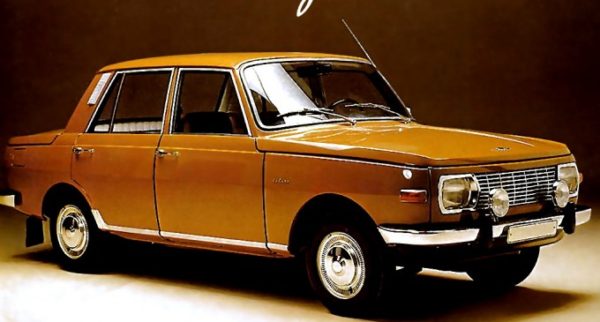
Wartburg 353
It is amazing how many traces the ordinary, modest, two-stroke "Wartburg 353" has left among its owners. They called it "Eastern Audi"They sang him songs, and people all over Eastern Europe and beyond loved him the most.
The story of the Eisnach car factory begins as early as the eighteenth century, when two-cylinder motor carriages called "Wartburg" were assembled for a short period. In the XNUMXs, he came to the factory BMW and began assembling his models of the then “Series 3”, including the famous sports roadster “328”.
The name “wartburg” reappears on the model “BMW 3/15 DA-3 wartburg”. The production of cars lasted until the beginning of World War II. After the war, the city of Einsach and the factory fell under East German territory. In battles, the factory damaged nearly 60 percent. The factory is under the control of the USSR, which already in 1945 restored the production of BMW cars.
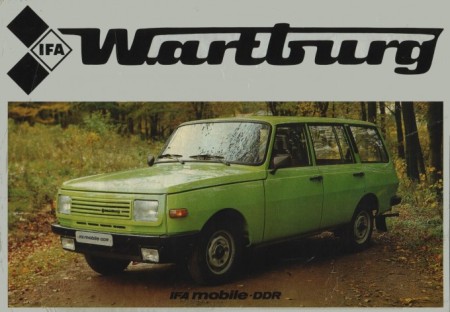
Popular wagon version
The Munich headquarters could not appeal for the name's protection as long as it was under military administration. Production of “321” and 326 modela models has been restored in Eisenach. In 1949, a factory in East Germany even displayed its "340" model, which was actually upgraded and redesigned the "BMW 326".
It should also be noted that the BMW plant in Munich did not resume production until 1951, which means everyone BMW the cars made between 1945 and 1951 came exclusively from Eisenach.
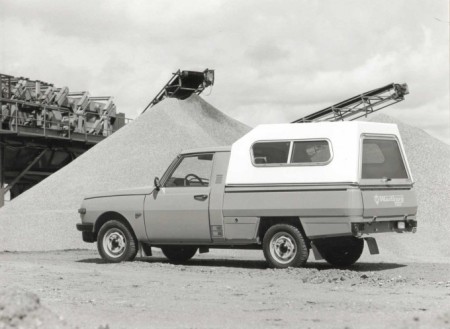
It also proved to be a good truck thanks to its robust chassis
In 1952, the Soviets handed over the plant to the state DDR. During that period, the Munich factory managed to get its name, logo and distinctive grille mask with two "kidneys", so East Germans had to make major changes.
They introduced their first independent model “IFA 309”, which was made on the basis of the prototype “DKW F9”. The significantly upgraded Wartburg 311 appeared in 1956. It kept the very attractive lines running from DKW as well as their three-cylinder two-stroke engine. This model has been made in numerous body versions; a sedan, wagon, coupe and even a roadster.
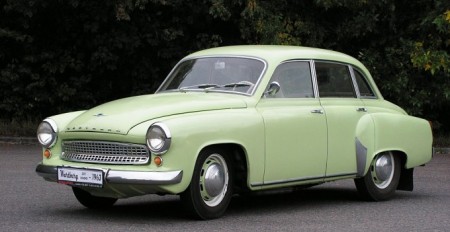
The predecessor, the “311” model, was based on DKV
Unfortunately, the need for mass production of cheap cars led to the disruption of this kind of renaissance. The turning point came in 1965 when the model “Wartburg 353” was introduced. It received a relatively simple three-way pontoon body, but maintained a strong chassis with diagonal rear wheel suspension, a three-cylinder two-stroke engine (this time a liter) that drives the front wheels through a four-speed (this time synchronized) transmission.
The practical body offered plenty of space for passengers and a large trunk. With very good build quality, certainly better than most Eastern European cars and good driving performance, it quickly became a customer favorite across Europe. DDR exported "353" to most of Europe's markets and even to West Germany.
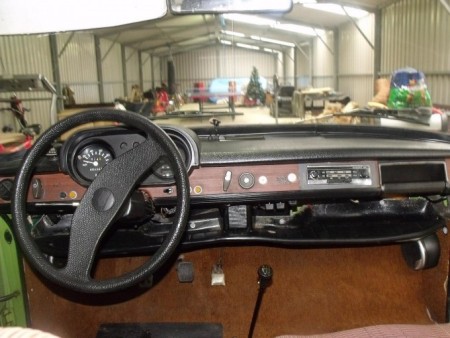
The floor of the cab is completely flat
During production, the "353" underwent a redesign three times. The "353 W" version was introduced in 1975, then in 1983 the "353 W" enhanced model was introduced, while the "1985 S" appeared in 353.
This latest version had electronic ignition, a five-speed transmission and numerous other improvements. One of them is that the radiator is no longer behind the engine but the end of the grille. There were three body variants, a sedan, a station wagon (“tourist”) and a pick-up (“trans”).

Front seats backrest in luxury equipment
The last variant of the "353 S" could be ordered with standard or "de luxe" equipment that had a sunroof, fog lights, and an alarm and central lock could be purchased. In the second half of the XNUMXs, DDR wanted to increase the economy of Wartburg and reduce pollution, so it offered Volkswagen to move its old engine production line to East Germany.
Volkswagen has agreed and production of four-stroke 1,3-liter engines has begun. They are starting to fit into the Wartburg bodywork since 1988, when the production of the "353" officially ceases.

The van's van had a chassis and mechanics of Wartburg
Special versions
Thanks to the solid chassis, the factory was able to make special versions of the car without too much investment in body development. The most popular version is certainly a van and a truck called "Barkash". There is also a four-door military kibelvagen convertible.
The “Melkus RS” sports coupe has undergone almost legendary status and has undergone major modifications to the concept of the basic model.
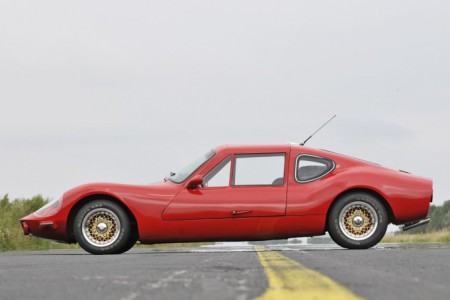
Melkus RS
Rock me gently
The two-stroke engine used a mixture of gasoline and special oil to work. As the oil does not dissolve in gasoline but emulsifies while driving, when the car is standing, the gas and oil are separated into two layers.
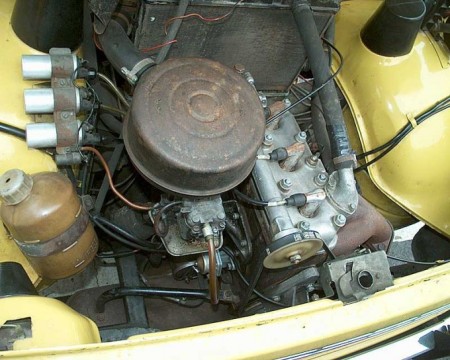
The three-cylinder engine had three coils
This is a dangerous situation because the engine is not lubricated. That's why the factory advised drivers to shake the tank before driving by rocking the back of the vehicle. Otherwise, a well-tuned and correct engine that has a properly metered mixture did not smoke too much, especially at constant load.
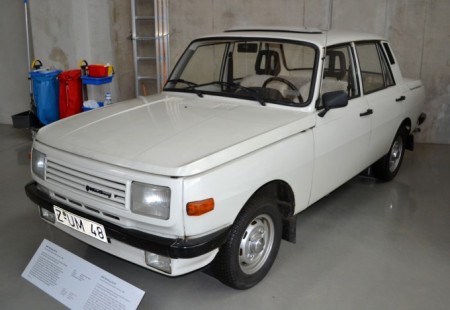
Latest version of Wartburg 353
Seven moving parts in the engine
The factory has opted for a two-stroke engine because it is the pinnacle of simplicity. It has only seven moving parts, three pistons, three connecting rods and a crankshaft. Otherwise, engine braking is dangerous because the engine has no lubrication, so the factory made a so-called idling. When accelerating, the engine started the transmission, but when decelerating it did not affect the wheels, just like a bicycle.
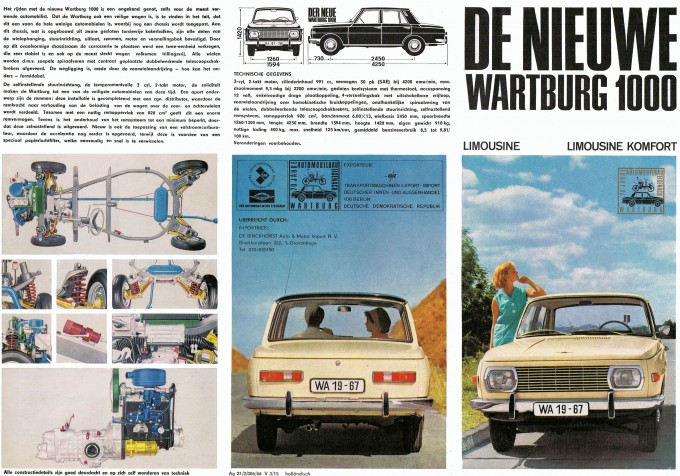
Text: Ivan Katunac
Retrieved from: www.magazinauto.com
Recommendation of similar texts:

Hi there, I am Mladen and I am an auto enthusiast. I started this blog years ago to help like minded people share information about latest cars, car servicing ideas, used car info, exotic cars, and auto technology. You will find helpful articles and videos on a wide variety of cars - Audi, Mercedes, Toyota, Porsche, Volvo, BMW and much more. Ping us if you have anything cool to share on latest cars or on how to make older cars more efficient, or just want to say hi!



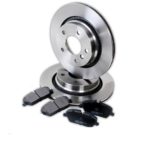

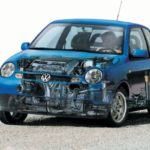
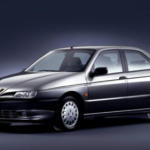
I had a Varburg 353 with a two-stroke engine. And now I'm sorry I sold it